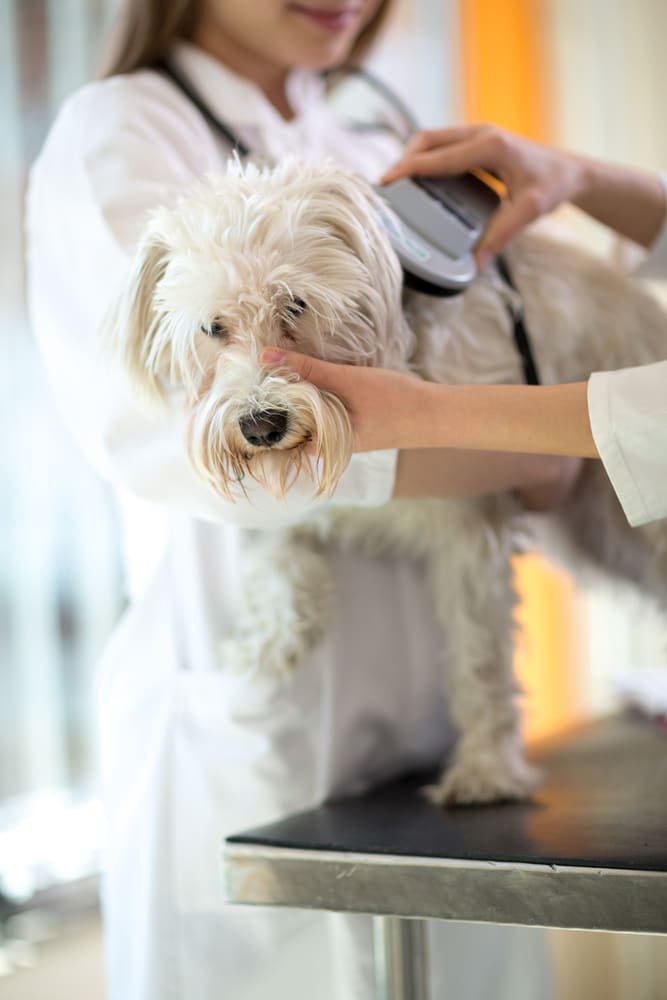Did you know in England, from April 6 2016 it will be a legal requirement to have your dog microchipped?
It’s every pet owner’s worst nightmare to lose their pet or see them run away. Millions of pets get lost each year and tragically, few are reunited with their owners. Many lost pets end up in animal welfare organisations, where they are adopted out to new homes, or in some cases, never even get found. Microchipping on the other hand, is a safe and easy way to ensure your pet is permanently identifiable, giving you the best possible chance of being reunited – and from April 6 2016, it will be a legal requirement.
What is microchipping?
Microchipping is a simple, safe and quick procedure. It can make all the difference in being reunited with your pet should they stray or go missing. The microchip is the size of a grain of rice and the procedure, which can be carried out by a vet or trained implanter, takes only a few minutes and lasts a lifetime. It consists of a tiny computer chip housed in a type of glass made to be compatible with living tissue. The microchip is implanted between your pet’s shoulder blades under the skin with a needle and special syringe
How does it work?
Once your pet is microchipped, you and your pet’s details are stored in a database along with the microchip’s unique 15 digit code. When a missing pet is found, the vet or organisation will scan the pet revealing the microchip’s unique 15 digit code, and contact the microchip database providing the aftercare service. The database will perform some security checks before releasing your contact details to the authorised user – so that your pet can be reunited with you.
Will it hurt?
Microchipping hurts about as much as getting a standard vaccination – so no, not really! No anaesthetic is required and the procedure should cause little or no discomfort to your pet.
How are the owners traced?
If a stray dog is found to have a microchip, the local authority, vet practice or animal welfare organisation will contact the national 24 hour database to find the owner’s details. The owner can then be contacted and reunited with their dog. There are currently four microchip databases operating in the UK. Petlog, managed by the Kennel Club, is the UK’s largest independent database working with 12 of the UK’s leading microchip suppliers. For more information click here. It is vital that the owner takes responsibility for updating their details with the database should their circumstances change.
How much does it cost?
The costs of microchipping your pet varies so check with your local vet, or welfare centre. Usually you will be looking to pay anywhere between £10 and £30. Microchipping is a one off process and lasts for life so it’s not much to pay really. There is a small minimum fee included in the price of the microchip which secures a basic registration on the database – the rest of the fee covers the purchase of the microchip and the vets time to do the procedure.
What other benefits are there?
All puppies are traceable to their breeder thereby helping reduce the problem of puppy farming and lessening the incidence of infectious disease and inherited defects from which many of these dogs suffer. It’s also a deterrent to dog theft, enables veterinary surgeons to contact dog owners for emergency procedures and importantly helps identify owners culpable of animal cruelty.
Anyone who does not have their dog microchipped after 6 April 2016 will have 21 days to have the dog microchipped, and failure to do so may
result in a fine. Under the new regulations it is also a requirement that the records must be kept up to date and failure to do so could lead to enforcement action resulting in a fine. So what are you waiting for? Get your pet microchipped today!



